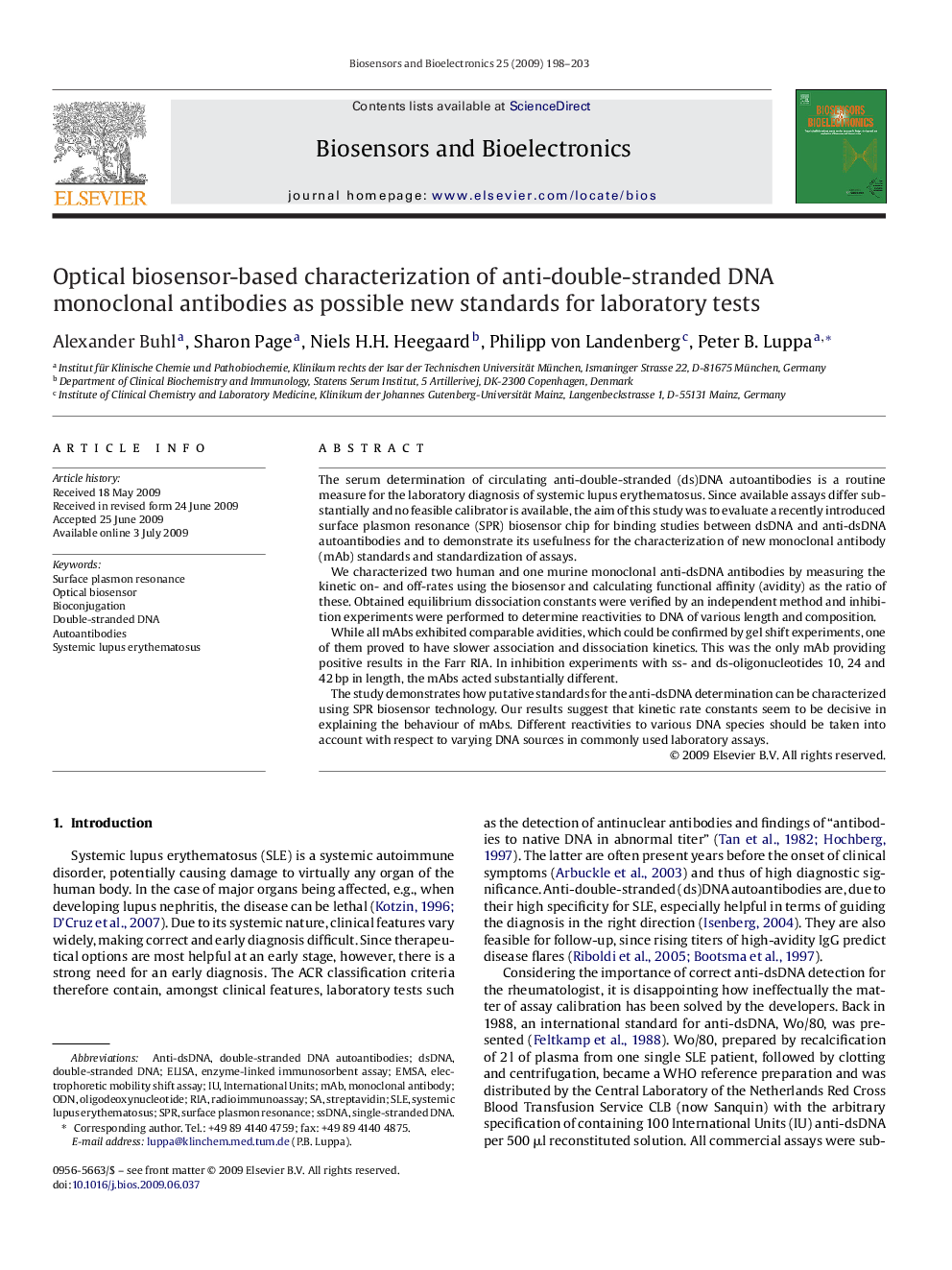| Article ID | Journal | Published Year | Pages | File Type |
|---|---|---|---|---|
| 868296 | Biosensors and Bioelectronics | 2009 | 6 Pages |
The serum determination of circulating anti-double-stranded (ds)DNA autoantibodies is a routine measure for the laboratory diagnosis of systemic lupus erythematosus. Since available assays differ substantially and no feasible calibrator is available, the aim of this study was to evaluate a recently introduced surface plasmon resonance (SPR) biosensor chip for binding studies between dsDNA and anti-dsDNA autoantibodies and to demonstrate its usefulness for the characterization of new monoclonal antibody (mAb) standards and standardization of assays.We characterized two human and one murine monoclonal anti-dsDNA antibodies by measuring the kinetic on- and off-rates using the biosensor and calculating functional affinity (avidity) as the ratio of these. Obtained equilibrium dissociation constants were verified by an independent method and inhibition experiments were performed to determine reactivities to DNA of various length and composition.While all mAbs exhibited comparable avidities, which could be confirmed by gel shift experiments, one of them proved to have slower association and dissociation kinetics. This was the only mAb providing positive results in the Farr RIA. In inhibition experiments with ss- and ds-oligonucleotides 10, 24 and 42 bp in length, the mAbs acted substantially different.The study demonstrates how putative standards for the anti-dsDNA determination can be characterized using SPR biosensor technology. Our results suggest that kinetic rate constants seem to be decisive in explaining the behaviour of mAbs. Different reactivities to various DNA species should be taken into account with respect to varying DNA sources in commonly used laboratory assays.
